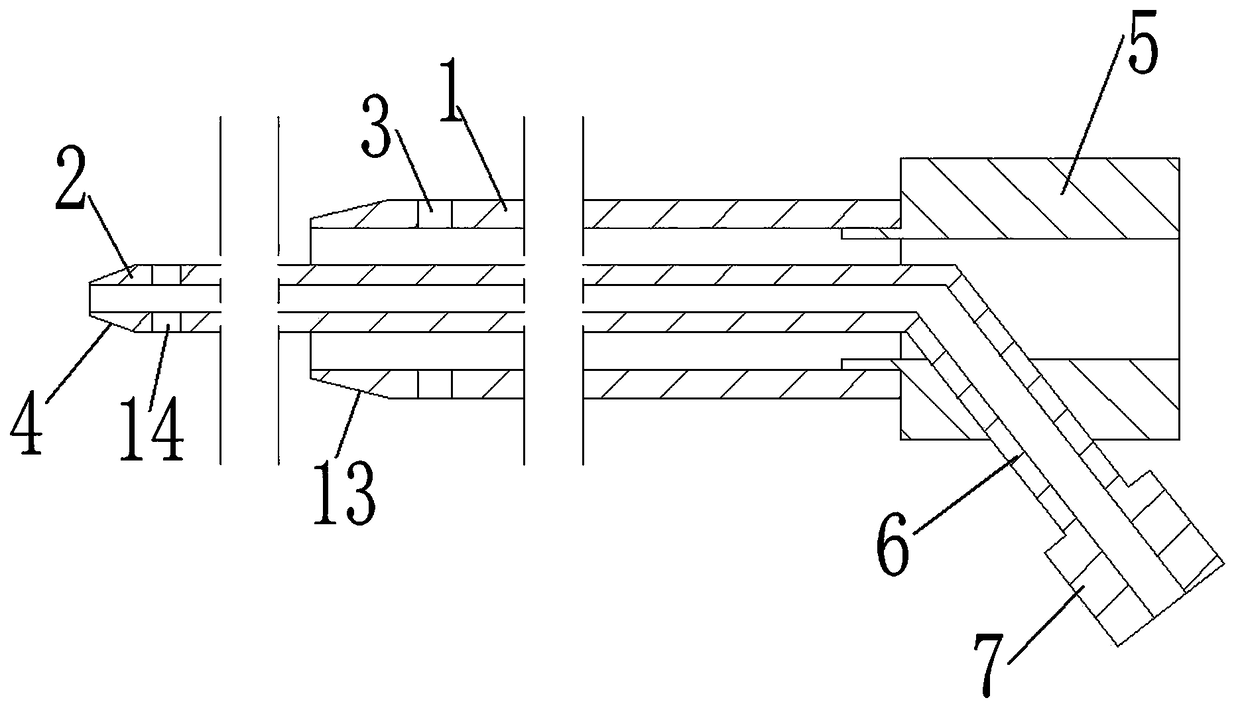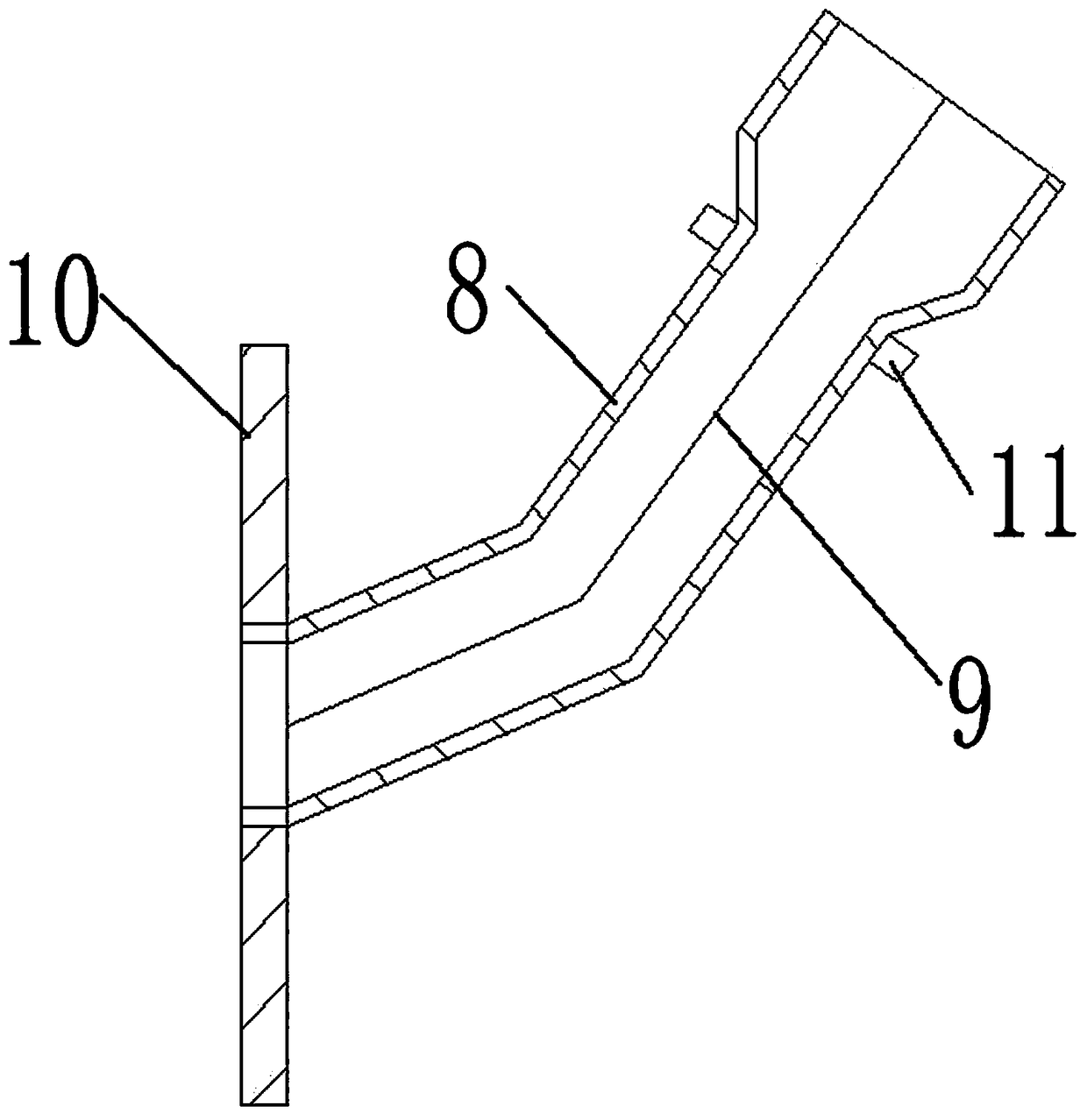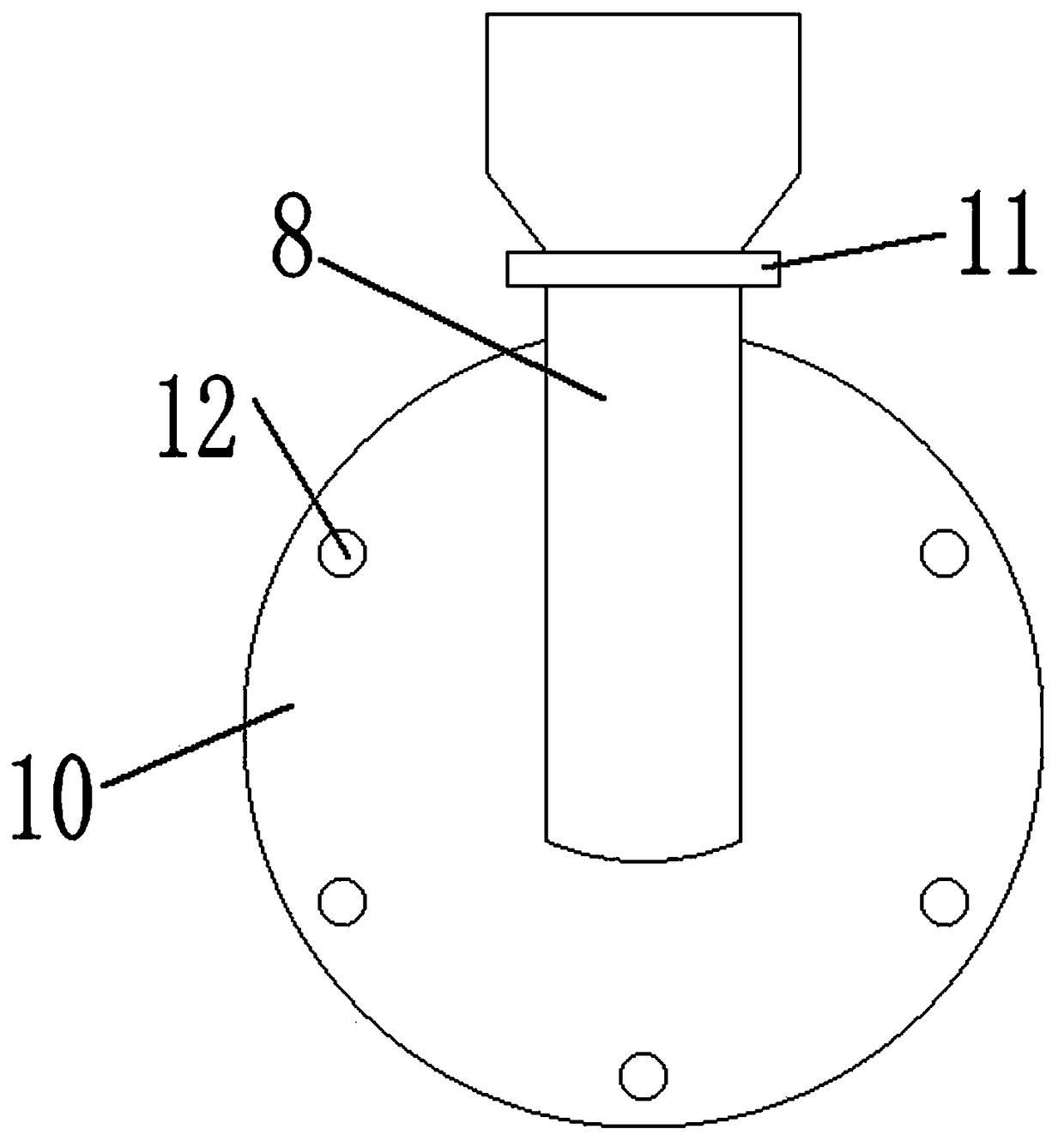Percutaneous dual-cavity feeding tube
A cannula and outer cannula technology, applied in the field of medical devices, can solve problems such as poor breathing, foreign body sensation in the nasopharynx, and decreased quality of life of patients, and achieve the effect of improving comfort and relieving pain
- Summary
- Abstract
- Description
- Claims
- Application Information
AI Technical Summary
Problems solved by technology
Method used
Image
Examples
Embodiment 1
[0035] Embodiment 1: The anti-backlash structure can be the following structure, which includes a balloon 15 fixed on the outer tube 1 and an inflation tube 16 arranged in the inner hole of the outer tube 1, the tail end of the inflation tube 16 is connected to the balloon 15, The head end of the inflation tube 16 is provided with a one-way valve 17 . When the overtube 1 and the balloon 15 enter the stomach, the inflatable balloon 15 in the balloon 15 is inflated through the inflatable tube 16, so that the overtube 1 is pulled outward to make the balloon 15 drive the anterior wall of the stomach closer to the abdominal wall. Due to the presence of the one-way valve 17, the gas in the balloon 15 can be prevented from overflowing.
Embodiment 2
[0036] Embodiment 2: The anti-backlash structure can be the following structure, which includes a number of baffles 18 arranged at intervals along the circumferential direction on the outer wall of the outer sleeve 1, the front ends of the baffles 18 are fixed to the outer sleeve 1, and the front ends of the baffles 18 are fixed along the axial direction of the outer sleeve 1. Extending to the rear, the blocking piece 18 is in a curved structure, and its tail end is not in contact with the outer wall of the outer sleeve 1 . Because the baffles 18 are bent and their tail ends are not in contact with the overtube 1, when the overtube 1 is inserted into the stomach along the guide wire, each baffle 18 is squeezed and deformed inward and enters the stomach, and when the overtube 1 is pulled outward At this time, because the tail end of the baffle 18 is warped and deformed after contacting the anterior stomach wall, each bending angle increases to realize the open structure, and eac...
PUM
 Login to View More
Login to View More Abstract
Description
Claims
Application Information
 Login to View More
Login to View More - R&D
- Intellectual Property
- Life Sciences
- Materials
- Tech Scout
- Unparalleled Data Quality
- Higher Quality Content
- 60% Fewer Hallucinations
Browse by: Latest US Patents, China's latest patents, Technical Efficacy Thesaurus, Application Domain, Technology Topic, Popular Technical Reports.
© 2025 PatSnap. All rights reserved.Legal|Privacy policy|Modern Slavery Act Transparency Statement|Sitemap|About US| Contact US: help@patsnap.com



